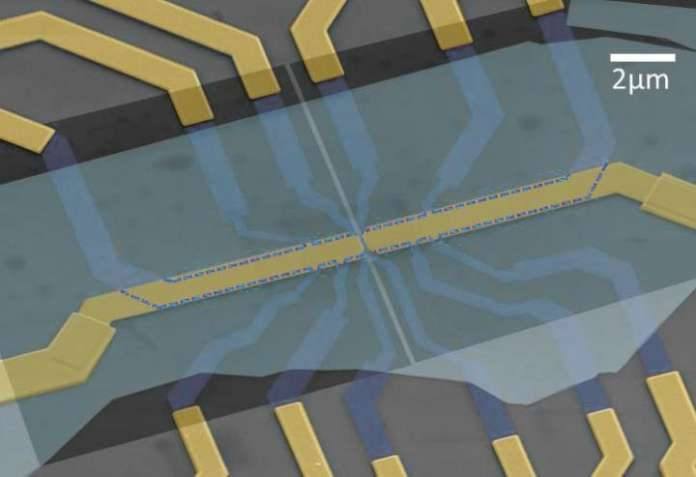The silicon-based transistor generally depends on the charge of electrons. It turns the device to ON or OFF. But, various scientists are trying to find a new approach to manipulating electrons based on other variables. It is called degrees of freedom. The charge is fist degree of freedom, electron spin is another and valley state of electrons is the third one. The ability to develop spin-based transistor is known as spintronics. The valley state of electrons depends on their energy in relation to their momentum.
Scientists from Penn State University have developed a device made of bilayer graphene. It has the ability to control the momentum of electrons. It requires less amount of energy and gives off less heat than standard CMOS transistors.
Jun Zhu, associate professor of physics at Penn State, suggests: “Think of electronics as cars and the valley as blue and red colors, just like a way to differentiate them. Inside a sheet of bilayer graphene, electrons will normally occupy both red and blue valley states and travel in all directions.”
This new system put a pair of gates above and below the graphene sheet. After that, an electric field added in a right angle to the plane.
The positive voltage applied to one side whereas negative voltage at another side. Thus, it creates a band gap in bilayer graphene. Between the two sides, there is a physical gap of 70 nanometers.
This physical gap is permeated by one-dimensional metallic state or wires. Those are a color-coded pathway for electrons. Red colored electrons travel through one side whereas blue colored electrons pass through opposite side. In theory, colored electrons could travel easily along the wires for a long distance with small resistance. This small resistance means power consumption is inferior in electronic devices and less heat is generated.
This experiment shows that such type of states can be created inside the interior of insulating bilayer graphene sheets. This is possible by using just a few gates.
Now scientists doing various experiments to analyze where resistance might come from. They also trying to develop valves that manage flow of electrons based on electron colors. This new concept is known as valleytronics.
Chad Eichfeld, Nanolithography Engineer, said, “The alignment of the top and bottom gates was crucial and not a trivial challenge. The state of the art electron beam lithography capabilities allowed Jing to create this novel device with nanoscale features.”
